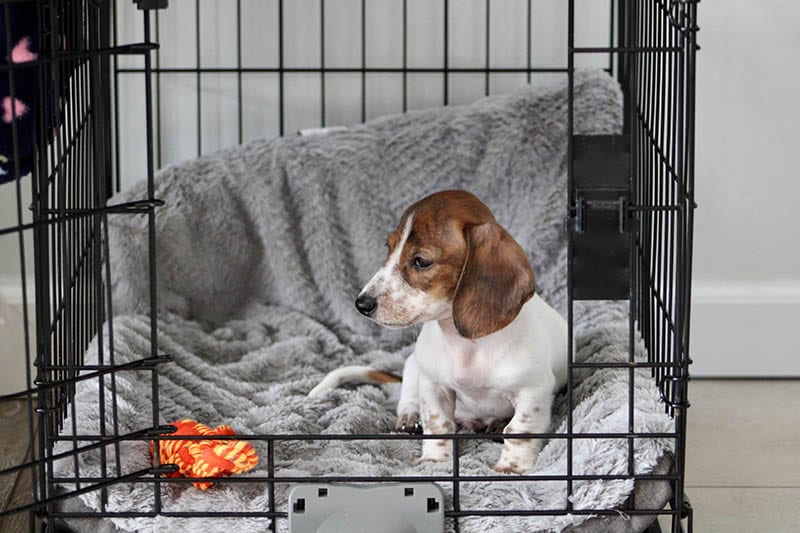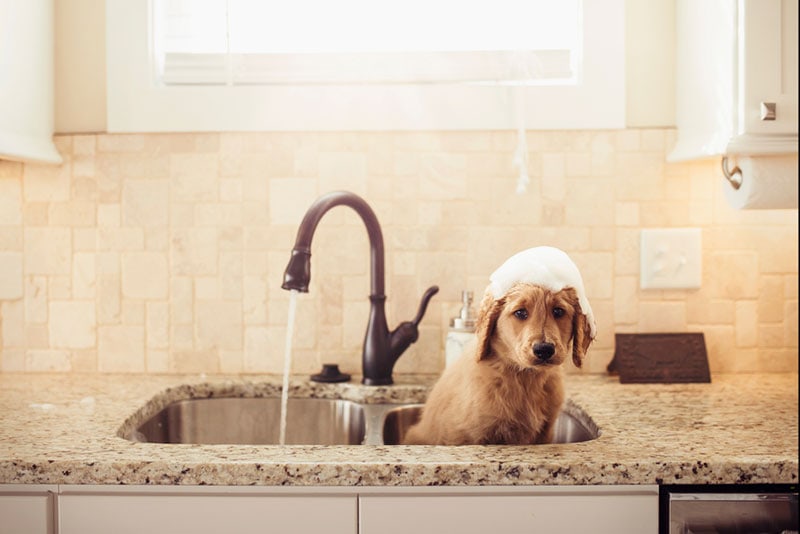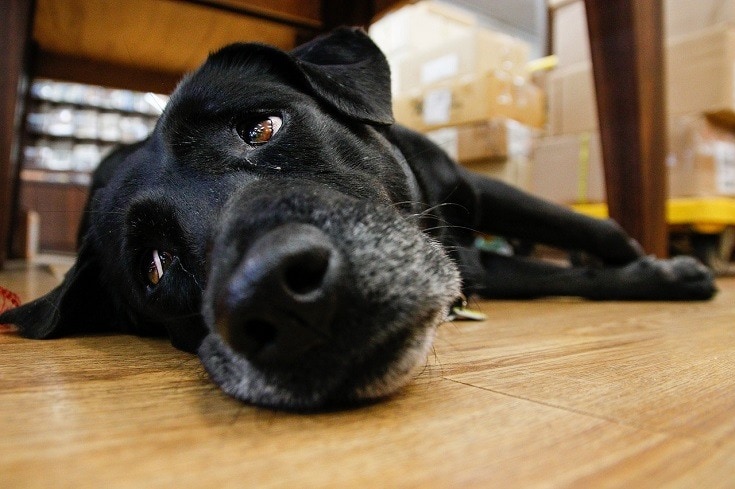Ringworm in Dogs: Signs, Causes, & Treatments (Vet Answer)

Updated on
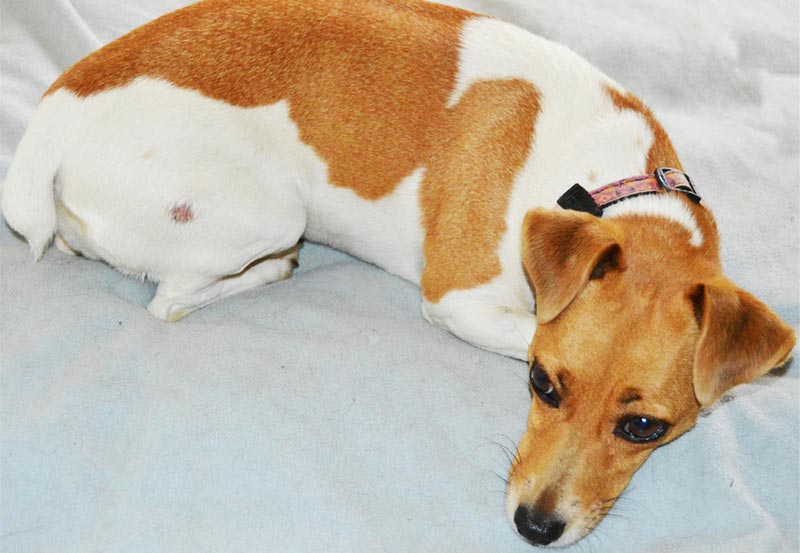
Ringworm in dogs is a fungal skin infection. It is extremely contagious and can be spread to other animals and humans easily. It causes redness, hair loss, and dry crusty skin. The lesions often present as circular patches across the skin.
The condition can be treated, although it is a lengthy process that requires good owner compliance. If you are concerned about ringworm, contact your vet for an appointment.
What Is Ringworm in Dogs?
Contrary to popular belief, ringworm is not actually a parasite, and lesions are not always ring-shaped. Ringworm is the name given to an infection of the skin, hair, and nails caused by fungi. It causes characteristic patches of skin, often in a ring shape, that are red, scabby, crusty, and hairless. The fungi that cause ringworm infection belong to a group called dermatophytes.
Ringworm is a zoonotic disease. This means it can be passed from dogs to humans or vice versa. It can also affect other animals such as horses, cows, cats, and small mammals like rats. Ringworm can spread easily and is highly contagious. It can be spread via direct contact. It can also survive on towels, bedding, and brushes for a long time, so often this is where dogs pick it up. The severity of the infection can vary greatly.
Mild infections can occasionally be self-limiting and resolve on their own. With more severe infections, medication is normally required. Infections are usually worse in elderly dogs, very young puppies, or dogs with compromised immune systems.
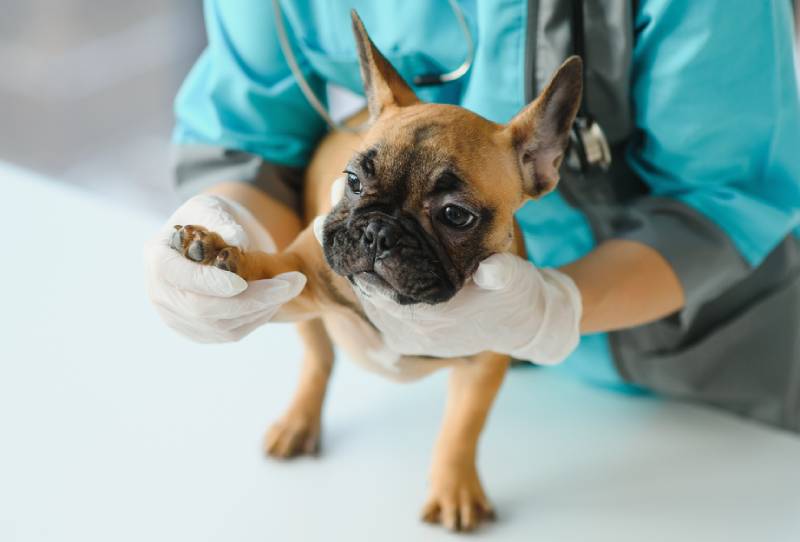
What Are the Signs of Ringworm in Dogs?
In dogs, ringworm lesions are usually round raised red lesions of hair loss, with scabby crusty skin present. If left untreated, the lesions will gradually enlarge. The initial area that was affected in the center of the lesion starts to heal and hair may regrow in the middle. The hair that regrows is brittle and fragile.
Sometimes the nail beds can be infected, and this can cause the nails to snap. Some dogs have ringworm fungi on their coats, but they do not show any clinical signs. These dogs can spread ringworm to other dogs, humans, or other animals they encounter, even without the skin lesions present.
Common signs of ringworm include:
- Redness
- Crusting
- Scabs
- Raised areas of skin
- Alopecia (fur loss)
- Dandruff
- Itchy skin
- Broken hair
- Poor quality coat
- Inflamed areas on the skin
- Darker areas of skin
- Swollen nail beds
- Excessive grooming
- Brittle nails that break easily
What Are the Causes of Ringworm in Dogs?
Ringworm is usually spread from dog to dog and dog to human via direct contact with an infected animal. Some dogs can carry the fungi without having any clinical signs or lesions. They can still readily pass it on with no one knowing.
Some types of ringworm can be found in soil and dogs can pick it up if they are digging or rolling around in the soil. Ringworm survives on its own in the environment well so it can be passed on via contaminated bedding, brushes, and dog toys if these are shared between dogs. It is thought that the spores of ringworm fungi can survive for up to 2 years in the environment.
Certain dogs are more susceptible to ringworm infections than others. This includes very young puppies, elderly dogs, or any immunosuppressed dogs. Any dog with ongoing skin issues is more likely to get ringworm infections as the skin barrier will be compromised. Some breeds of dog are thought to be more prone to ringworm, such as Jack Russell terriers, Yorkshire Terriers, and Boston Terriers.
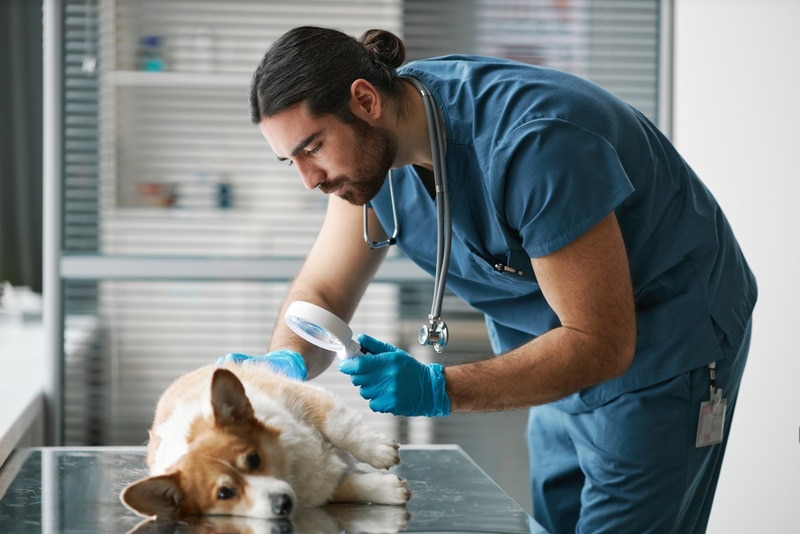
How is Ringworm Diagnosed in Dogs?
There are a few different ways your vet can diagnose ringworm. They will usually reach for something called a “wood’s lamp” first. This is a light that emits ultraviolet waves of light. The fungi Microsporum Canis glows fluorescent under the wood’s lamp, so this is a good way of identifying some types of fungi although not all glow under this light.
Your vet can carry out a fungal culture (also known as a DTM or dermatophyte test medium). This is where a sample of hairs/scabs is collected from your dog and allowed to grow on a culture medium. If anything is growing, it can be identified under a microscope. All types of fungi can be identified; however, it can take up to 3 weeks to get results. Another option is a PCR test (short for Polymerase Chain Reaction), this test is carried out on the hairs and it detects fungal DNA. This test is faster than the DTM and can produce results in as little as 3 days. The only downside of the PCR is that although it is good for the detection of ringworm, it cannot be used for follow-up checks to ensure the ringworm has gone. This is because it still recognizes dead fungus so there may not be an active infection present, but it will still be detected on the PCR.
How Do I Care for a Dog with Ringworm
There are two main ways to treat ringworm in dogs, these are topical treatment and systemic medications. Often a combination of the two is used. Your vet may also recommend shaving the hair around affected areas. You must only do this if your vet has instructed you to and ensure you clean the clippers thoroughly afterward.
It is important to remember that while you are treating your dog, you must ensure that there is no possibility there will be reinfection; for example, if they have contaminated bedding or keep playing with another dog with lesions. It is important that you continue to use the medication and only stop it if your vet has advised you to. If you stop the medication before the infection has resolved, the chances are it will recur. Your vet will usually check the infection has resolved by taking ringworm cultures. This allows your vet to decide how long the treatment should last.
- Topical Treatment: Topical treatment can be used alone or in conjunction with oral medication. Treatment usually includes chlorhexidine wash or shampoo and an ointment or cream containing Miconazole, Clotrimazole, or Terbinafine. Your vet will discuss the application and frequency of use with you. The duration of topical treatment is usually weeks or months.
- Oral Treatment: Common oral medications used are Itraconazole, Griseofulvin, and Terbinafine. Your vet will advise you on dosing. It is important to finish the course given to you even if the signs resolve before the end of the course. Oral treatment can last for weeks or months depending on the severity of the infection.
It is vital that owners decontaminate their environment as well as treat their dogs. A good cleaning regime is essential for preventing reinfection. There are thousands of fungal spores shed from hairs in the environment from a dog that is infected. Other animals can easily contract an infection by direct contact with a dog that has ringworm or by contact with fungal spores in an area where the spores have been shed by an infected dog. This is why the hair is sometimes clipped away, to prevent further spreading.
Frequently Asked Questions (FAQs)
Can ringworm resolve on its own?
Ringworm can resolve on its own, although this does depend on the severity of the infection, the species of ringworm involved, and the general health of the dog. It can take a very long time and your dog will lose a lot of hair. Their skin will be more prone to other skin infections if there are broken areas and scabby patches. Therefore, it is always better to consult your vet and get treatment.
Can ringworm be passed onto humans easily?
Ringworm is very easily passed on to humans and other animals. Humans who are very young, elderly, or have compromised immune systems are most at risk of catching the infection.
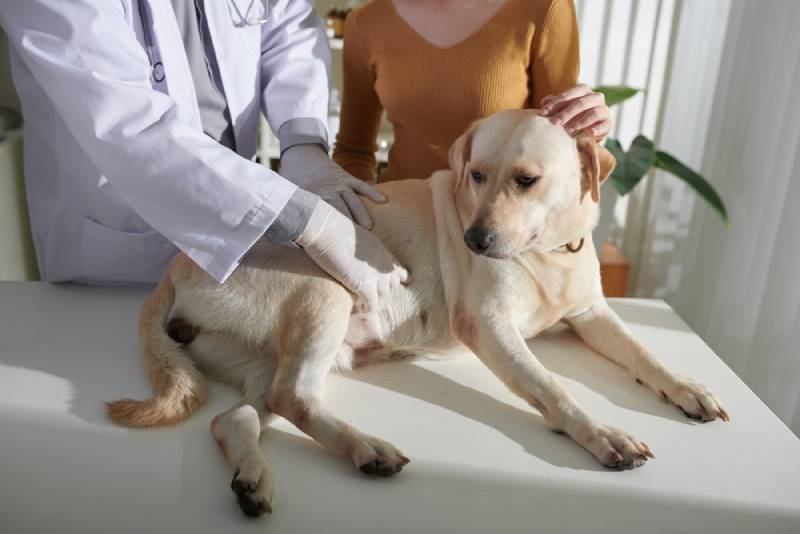
How do I clean my house if my dog has ringworm?
All areas of the house need to be cleaned thoroughly. First, all of the dog hairs need to be removed, by sweeping, wiping, and vacuuming all of them away. Then all areas need to be disinfected properly. Fabric sofas, carpets, towels, and bedding all need to be cleaned thoroughly as well. Do not forget to clean any vehicles your dog goes into.
Conclusion
Ringworm is a common skin infection seen in dogs. It can cause widespread lesions if left untreated and can cause your dog stress and discomfort.
It is important that owners are aware of the clinical signs associated with ringworm so that they can identify it and help prevent the spread. If you are worried your dog may have ringworm, speak to your vet for some advice.
Featured Image Credit: Nathalie Marran, Shutterstock



